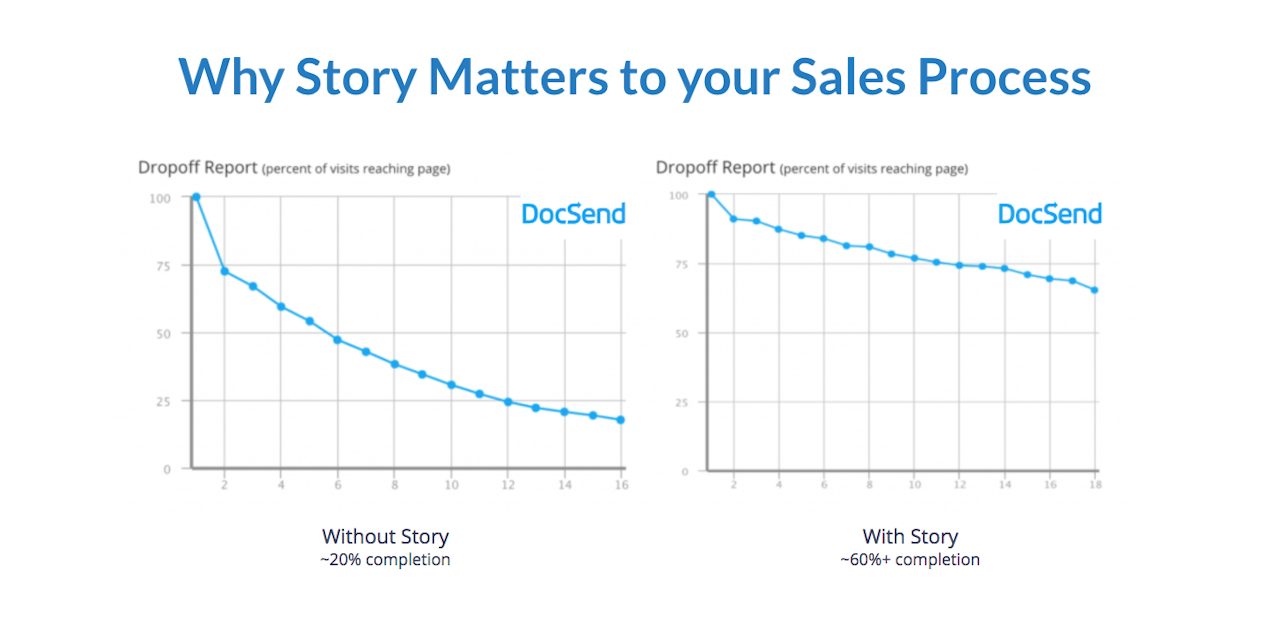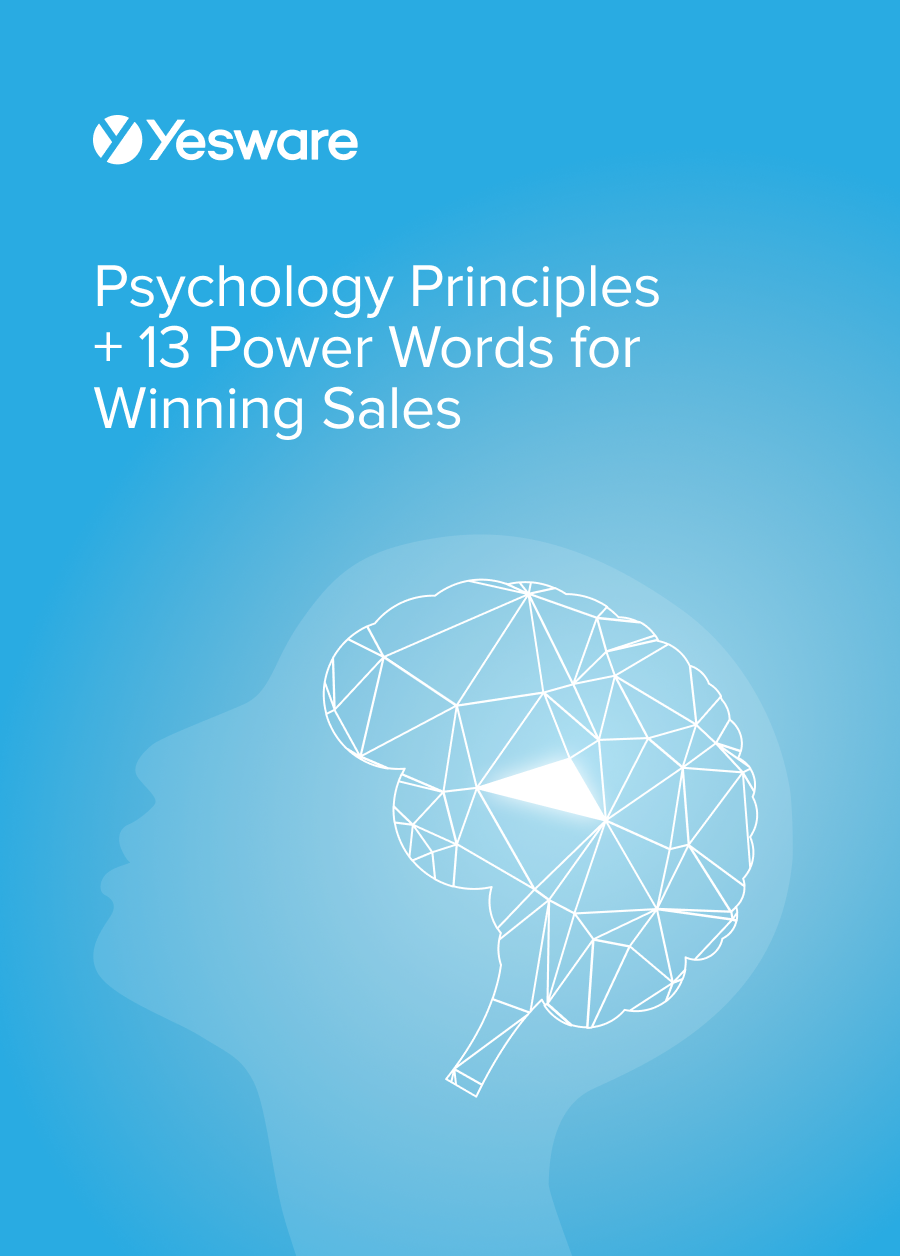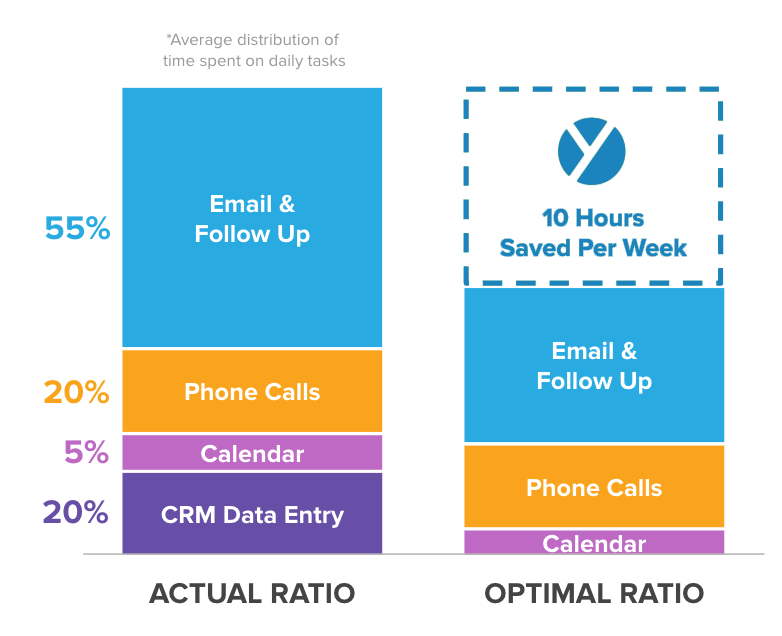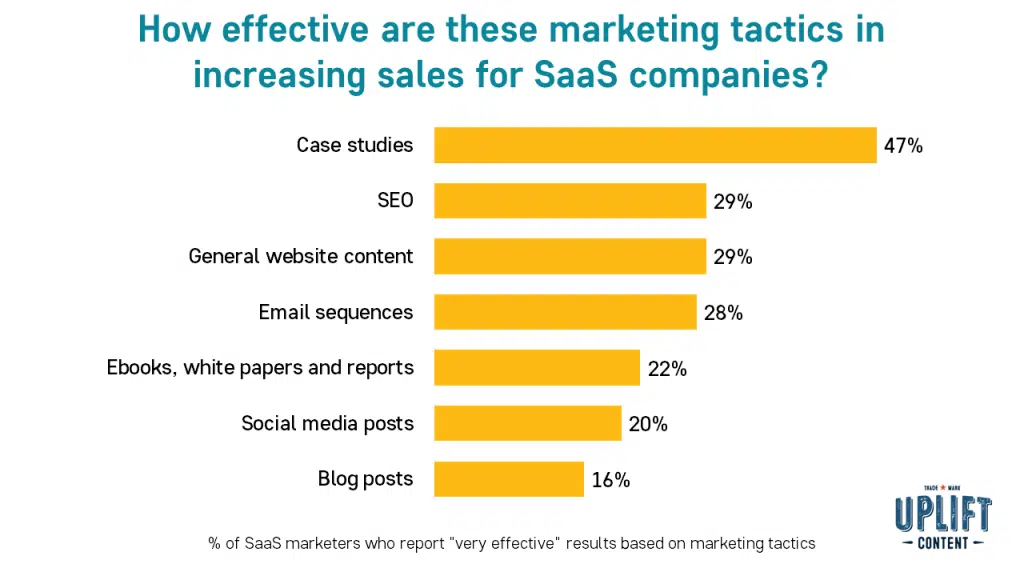How to Create a Winning Sales Deck [Examples & Tips]
Casey O'Connor
A sales deck is a critically important component of a successful sales pitch.
Unfortunately, the sales deck is often poorly utilized. Many sales reps lose the leverage a sales deck can provide by treating it as an afterthought, or by using it as a crutch to get through a just-average sales pitch.
With today’s B2B sales process involving nearly seven decision makers to close each deal, your sales deck is an opportunity to effectively reach each person in the process while ensuring continuity in your message.
In this article, we’ll go over everything you need to know about how to make an outstanding sales deck, including the most important components, best practices, and examples of ones that hit the mark.
Here’s what we’ll cover:
- What Is a Sales Deck?
- Elements of a Successful Sales Deck
- Sales Deck Examples
- 5 Best Practices for Creating a Killer Sales Deck
- Tips for Presenting Your Sales Deck
What Is a Sales Deck?
A sales deck is the textual and/or visual component of a sales presentation. It’s usually slide-based and is created using presentation software like PowerPoint, Slides, or Keynote.
Sales decks are usually presented to prospects at the same time as the sales pitch. In their ideal form, sales decks are used to supplement and support the demo or pitch.
Once the demo is complete, sales reps can distribute sales decks to attendees and other decision makers so they can review the material on their own time.
The main purpose of a sales deck is to help reps present their product as a solution to their prospect’s problem. It helps prospects connect with your brand and offer, understand the value offering, and execute next steps.
Elements of a Successful Sales Deck
When creating a sales deck, many sales reps get caught up on the visual aspect of it and end up inadvertently neglecting the content.
While it’s absolutely true that sales decks are meant to be interacted with visually, the content is just as important as the aesthetics.
After all, the best sales decks will be passed around between decision makers and executives — likely including some who weren’t present for your actual pitch — and the value proposition needs to be outlined clearly.
Here are the non-negotiable content components of a successful sales deck:
- Who You Are: The sales deck should include a brief overview of your brand, its mission, your role (specific to the sales process and the prospect), and your product.
- The “Before:” All sales decks should include a nod to the challenges and pain points your prospects encounter before they purchase your product. It’s important to indicate to your prospect that you understand their pain.
- The “After:” The sales deck should also paint the picture of how good life can be after implementing your solution. It should “point to the top of the mountain,” so to speak, and give prospects a glimpse into how great life can be once they’ve overcome all of their challenges (with the help of your product, of course).
- The Problem: Be sure your sales deck is clear about the problem(s) your product can solve. This isn’t to say that you need a specific slide called “Problem” — you can very likely weave at least some of this content throughout the deck in more subtle ways. But prospects should be able to trust after digesting your sales deck that you have a thorough understanding of their challenges.
- Why Your Solution Is the Best: Part of your sales deck should outline your unique selling points, and what makes your offer better than any others on the market.
- Social Proof: One very effective way to leverage a sales deck is to include case studies or other social proof that your solution works. Be sure to include specific mentions of the other brands your product has helped, and, if possible, concrete data around their results after implementation.
- Call to Action (CTA): The sales deck should outline what prospects need to do next in order to continue through the sales process. The CTA should be clear, concise, and enticing.
With all of these components in mind, it’s important to note here that sales reps should avoid treating this as a plug-and-chug checklist. Creating a successful sales deck is part art and part science; there is a good amount of creativity involved in getting it right.
Ultimately, there needs to be a balance between including and delivering factual information about your offer and designing a visually stunning presentation.
Sales Deck Examples
There are many ways to design and create a sales deck. No one format is right or wrong. Each industry, product, market, and prospect will require a unique sales deck to help deliver the appropriate message.
Let’s take a look at some of our favorite examples. Below you’ll find sales deck examples in two formats: a textual outline describing a specific type of sales deck, and visual examples that show them in final form.
1. CXO Deck
The CXO approach is one way to create a very effective sales deck.
With this strategy, the sales deck is designed to get buy-in from high-level executives. The CXO approach uses the sales deck to outline a seismic shift in the way something has always been, otherwise known as “The Big Change.”
Zuoro, for example (shown below in this section), starts their slide deck by talking about how the world has become subscription-based. They go on to position their product as the tool to use to help companies adapt to a subscription model.
This method is effective because it removes some of the inherent defensiveness that sometimes arises when you confront prospects with their problem. Instead of telling prospects directly that they need to start upping their subscription game, for example, Zuoro’s sales deck presents it as a “world” problem that prospects can get an edge on by using their product.
The CXO formula is as follows:
- Identify a big change in the world (or, at the very least, in your prospect’s industry).
- Clearly explain that there will be a group of people who come out on top after this change, and a group of people who will ultimately fail.
- Point to the top of the mountain. Paint the picture of what life could be like if the prospect is in the “successful” group.
- Position your product’s features as specialized tools for overcoming the obstacles in the way of becoming successful in the face of this world change.
- Show evidence that you’ve helped other groups become successful this way.
The CXO framework works because human beings are wired to pay attention to change. By framing the sale in the context of a current or upcoming paradigm shift in the market, prospects are likely to engage and want to be part of a successful solution.
2. The Budget Holder Proposal
Developed by Peter Kazanjy, the “Budget Holder” deck is designed to clearly outline the ROI of purchasing your product.
It quickly gets down to brass tacks, with most of the deck focused on “the cost of the problem today.”
In other words, this deck should hammer home just how much prospects are spending by continuing to face their problem without your solution.
3. Practitioner’s Demo
If you find yourself in a demo with product users (as opposed to a panel of decision-makers), you might want to consider a practitioner’s demo deck.
This sales deck format is designed to generate enthusiasm and encourage product adoption from the people who ultimately become your most authentic case study: those who will use it on a day-to-day basis.
The key with this kind of sales deck is to position the demo in a way that answers a question. The question should be a representation of the problem the prospect faces, and the solution should lead the prospect to your product.
4. Salesforce
Salesforce is one of the most robust CRM systems available on the market. There’s virtually no limit to the complications and customizations available to users of the platform.
In fact, its complexity is one of the main objections prospects have when they consider the product.
Salesforce’s slide deck, however, manages to simplify the complex with ease: each slide, as well as the presentation as a whole, conveys the perfect balance of aesthetics and information. It streamlines the product into easy-to-understand high-level concepts and gives prospects the confidence and optimism they need to take on its complexity.
5. Uber
Unlike Salesforce — which is a very common brand name in the B2B world, but lesser known in most other spaces — Uber is a worldwide brand. They use that to their advantage in this slide deck. Images steal the show here, with text limited to the bare minimum needed to provide the relevant information and make an impact.
6. Mattermark
The Mattermark sales deck does a really great job of defining the problem. It’s also chock full of real-world data and impressive case studies of big-name brands who found success with their approach.
7. LinkedIn
LinkedIn offers a great example of a longer sales deck that works. Although “short and sweet” is a dependable rule of thumb, the more important takeaway is that your sales deck should include just enough information to supplement the demo. Eliminating important information for the sake of “keeping it short and sweet” defeats the purpose of the sales deck.
8. Kimola
The Kimola sales deck does a fantastic job of storytelling, starting with a story about Jane to help highlight what could happen if prospects use their product. There’s also a great mix of high-impact images (including several celebrity faces) coupled with impactful, succinct text.
9. Zuora
Zuora‘s sales deck is widely known as one of the best examples of the CXO deck to date. It frames “The Change” and artfully tells the story of companies on the cutting edge of becoming masters of a subscription economy.

5 Best Practices for Creating a Killer Sales Deck
1. Tell a Story
Storytelling is one of the most effective ways to get your sales deck to resonate with prospects and decision-makers.
The human brain is wired to connect through story, and research backs this up: people remember just 5 – 10% of statistics presented to them, 25% of imagery, and up to 70% of stories.
The DocSend case study is a perfect example of this. They found that their sales decks were being way underutilized in the sales process, so they decided to do a complete overhaul. After they incorporated storytelling into their sales deck framework, their deck completion rate tripled.

The CXO framework lends itself nicely to this tactic; it has storytelling built in and makes it easy to engage the prospect.
Tip: Grab some psychology-backed tips below to connect your stories with buyers.
 Psychology Principles + 13 Power Words for Winning SalesData-backed psychological principles, nonverbal cues, and persuasive phrases to win more deals.
Psychology Principles + 13 Power Words for Winning SalesData-backed psychological principles, nonverbal cues, and persuasive phrases to win more deals.
2. Customize as Much as You Can
While it’s true that the foundational elements of your sales deck will stay more or less the same regardless of your audience, it’s crucial that you personalize each deck as much as you can.
It’s standard practice to drag and drop prospects’ brand logos into sales decks, but go the extra mile and create your deck using the prospect’s brand’s color scheme as your design template. Use their company’s font if it’s available. Mirror as much of their brand as you can; this is a subtle psychological cue to prospects that this is a viable partnership.
Also, make sure that the content of your sales deck resonates with the prospect to whom you’re presenting. If the prospect shares that their number one priority is customer service, your sales deck should be built around that — even if it’s one of your less significant features.
3. Use Images
There is no faster way to lose a prospect’s interest during a demo than to stuff your slides with text and read from them like a script.
For example, which is most effective? This statement — “On average, Yesware customers save ten hours per week” — or this image:

Remember, sales decks are meant to supplement your presentation. They are not designed to act as a teleprompter.
One easy way to combat the urge to over-explain is to rely on images for the bulk of your slides. As a general rule of thumb, each sales deck slide should contain about 20 words. The exception to this rule is when you aren’t planning to use your sales deck during the presentation (you may just distribute it after the fact instead) — in this case, you can include up to 60 words per slide.
4. Leverage Case Studies
Use social proof in your sales decks whenever possible. It’s one thing to paint the dream of what life could look like after purchasing your product, but that dream becomes much more real to the prospect if you can demonstrate that you’ve done it before.
In fact, most SaaS sales reps report that case studies are their most effective marketing tool.

Your happiest customers can be some of your best “invisible” sales reps, if you know how to leverage their success to your advantage.
5. Consider Mobile Formatting
Although it’s likely that your sales deck will be projected on a large screen during your demo, don’t assume it will be viewed under the same conditions after everyone goes home.
Ideally, prospects will interact with your sales deck from their computer, but not always. You’ll need to design the deck with mobile users in mind.
Now, that’s not to say that you should design it specifically for mobile — don’t shortchange the process for the sake of fitting it on a phone screen. But it’s worth keeping in mind as you create the deck so that the most important information is still accessible even on mobile.
Tips for Presenting Your Sales Deck
Most sales reps know that presentations are part of the job. It’s rare to find a sales rep with stage fright or a fear of public speaking.
Still, that doesn’t necessarily mean that all sales reps are stellar presenters. There’s always room for improvement. Keep the following tips in mind as you present your next demo and sales deck.
1. Consider Your Delivery
Not all sales decks are created for the same purpose. Some are designed to supplement a demo, and are viewed in real-time alongside a presentation. For these sales decks, less is more — remember to keep your text short and sweet.
Some sales decks, though, aren’t used during the presentation at all, and are instead distributed after the fact as a kind of recap or overview. It’s okay to add a bit more text and background information on these.
Of course, it’s still important to be succinct in either case. But knowing how the sales deck will be delivered will help guide its design and content.
2. Case Studies Should Be Concrete
We’ve already covered the idea that sales decks should include case studies whenever possible. But there’s a right way and a wrong way to highlight them.
Be as specific and tangible as you can when you present successful case studies. Social proof is meant to increase trust, but vague statements like “Company X increased their revenue after using our product!” can actually decrease trust and create skepticism.
Use data and specific KPIs from real clients to demonstrate the effectiveness of your product: “Company X saw a 304% increase in revenue after using our product for 12 months.”
3. Encourage Interruptions
Sales presentations should be interactive. Although sales reps are the ones presenting, the demo is really an opportunity for the buyer.
Questions and comments should be welcomed and encouraged. The less you “talk at” the prospect, the better. The best sales presentations feel more like a conversation than a lecture.
4. Don’t Include Background Knowledge in Your Deck
It may seem counterintuitive, but try to avoid including any background information on your slides.
Instead of putting relevant knowledge on the slide, present it orally instead. This has the subtle psychological effect of making the presenter look like an expert on the subject.
Not only will this help you stick to your word count, but it also gives you the chance to position yourself as a knowledgeable consultant, which is exactly what today’s B2B prospect is looking for in the buying process.
5. Use Your Sales Deck as a Guide
One of the fastest ways to torpedo a sales presentation is to use your sales deck as a script. There is almost nothing worse than sitting through a presentation where the presenter reads from the slides the entire time.
The sales deck is not meant to be a crutch. In fact, the sales rep really shouldn’t have to interact with the deck much at all. It exists to help the prospect better understand the content of your presentation, and guide any other decision-makers to the conclusions they need to draw to move forward with the purchase.
Do you use sales decks as part of your sales process? Do you enjoy the process of creating them? How have they helped you speak to decision-makers and drive sales?
Get sales tips and strategies delivered straight to your inbox.
Yesware will help you generate more sales right from your inbox. Try our Outlook add-on or Gmail Chrome extension for free, forever!
Related Articles
Casey O'Connor
Casey O'Connor
Casey O'Connor
Sales, deal management, and communication tips for your inbox
![How to Create a Winning Sales Deck [Examples & Tips]](/blog/_next/image/?url=https%3A%2F%2Fwww.yesware.com%2Fwp-content%2Fuploads%2F2022%2F08%2Fsales-deck-cover-yesware.jpg&w=1984&q=75)
